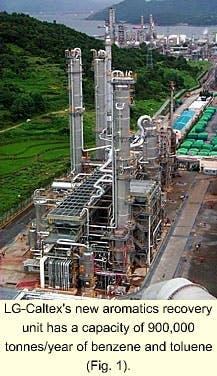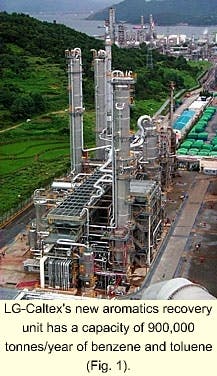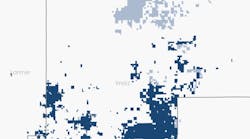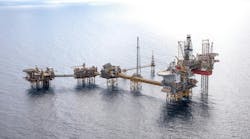At the end of July, LG-Caltex, Yosu, South Korea, commissioned its new aromatics recovery unit, one of the largest single-train extraction units in the world, with a capacity of 900,000 tonnes/year of benzene and toluene (Fig. 1).
The company brought the unit on line in time to meet the growing demand for benzene and toluene in the region. The grassroots unit brings the LG-Caltex Yosu complex closer to its goal of becoming one of the world's top five aromatics producers in the world.
The unit features the GT-BTX proprietary aromatics-recovery technology from GTC Technology Corp., Houston.
GT-BTX recovers aromatics components from reformate using extractive distillation, instead of traditional liquid-liquid extraction, thereby reducing the number of equipment pieces and operating and capital costs. The technology uses a proprietary solvent blend formulated by GTC Technology.
Both the benzene and toluene purity levels are greater than 99.995%. The new unit recovers 99.9% of the aromatics from the feed stream and has less than 1 ppm of solvent losses in the product streams.
According to S.R. Woo, senior vice-president of LG-Caltex, the unit stabilized quickly and is operating beyond specification and guarantee for every point of the process performance.
Joseph Gentry, aromatics business manager for GTC Technology, said the unit's design will allow it to process a significant variation in the feed slate to accommodate both wide-boiling range catalytic reformate and pyrolysis gasoline feedstocks.
Construction of this grassroots facility began in 1999.



